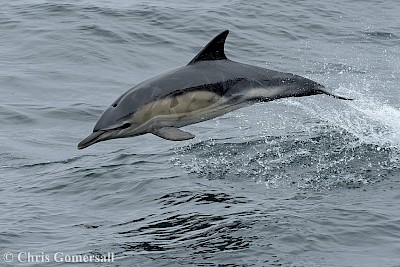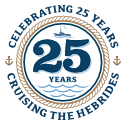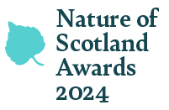 Conservation charity the Hebridean Whale and Dolphin Trust said that from its research yacht Silurian, which was used in the BBC TV programme Blue Planet, volunteers and scientists spotted 2,303 common dolphins, 42 bottlenose dolphins and 94 Risso’s dolphins in its 2016 expeditions.
Conservation charity the Hebridean Whale and Dolphin Trust said that from its research yacht Silurian, which was used in the BBC TV programme Blue Planet, volunteers and scientists spotted 2,303 common dolphins, 42 bottlenose dolphins and 94 Risso’s dolphins in its 2016 expeditions.
Trust director Alison Lomax said: “The impressive range of species documented in our at-sea surveys last year is a powerful reminder that Scotland’s west coast ocean environment is home to remarkable marine life.
The figures for all three species are the highest recorded in the charity’s annual surveys.
Average annual figures over the last 14 years recorded 463 individual common dolphins, 14 bottlenose dolphins and 12 Risso’s dolphins. For common dolphins, records range from zero in earlier field seasons to 1,862 during 2007.
Dr Lauren Hartny-Mills, science officer at the trust, said: “The reasons for the high number of sightings of these charismatic dolphin species and the broader effects on the marine environment and other species remain unclear.
“But the intriguing findings highlight the importance of ongoing monitoring and research to strengthen our understanding of what is taking place in Hebridean waters and to ensure well-informed conservation action.”
The latest findings came during a research season lasting from May to October, as part of the trust’s citizen science project monitoring whales, dolphins and porpoises – collectively known as cetaceans – and basking sharks in the area.
Last year saw 71 volunteers work with marine scientists on visual surveys and acoustic monitoring with underwater microphones or hydrophones, and identifying individual cetaceans through photography.
The charity, based on the Isle of Mull, now holds data from a surveyed area measuring more than 95,000km.
It aims to pass the 100,000km milestone during 2017 and recruits volunteers to work for two-week periods between April and September.
“Long-term scientific studies of this globally-important habitat and its inhabitants are crucial if we are to ensure a secure future for the Hebrides’ spectacular cetaceans.”





















All superb. Chris even took us to my favourite anchorage on Rona and loitered where I had once seen an eagle’s nest. My special wish was to see the Summer Isles after first looking down on them in 1974! They were as magical as I had thought they must be. Each day was organized to make the very best of what the islands can offer. Private facilities are very good, and I love “Sea Kelp” toiletries. I really appreciated the new seating forward which was really comfortable. The crew all seemed to be very happy in their roles which made me feel comfortable with them. Hannah’s enthusiasm was infectious. Don’t hang about, just BOOK if you can find a space.
Jan Shearn: 22 May 2023Far-flung islands: Shiants & the Summer Isles